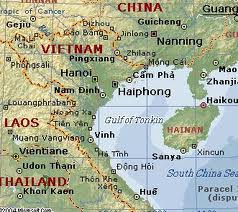 The Gulf of Tonkin incident is the name given to two separate confrontations involving North Vietnam and the United States in the waters of the Gulf of Tonkin. On August 2, 1964, the destroyer USS Maddox, while performing a signals intelligence patrol as part of DESOTO operations, engaged three North Vietnamese Navy torpedo boats of the 135th Torpedo Squadron. A sea battle resulted, in which the Maddox expended over two hundred and eighty 3-inch and 5-inch shells, and in which four USN F-8 Crusader jet fighter bombers strafed the torpedo boats. One US aircraft was damaged, one 14.5 mm round hit the destroyer, three North Vietnamese torpedo boats were damaged, and four North Vietnamese sailors were killed and six were wounded; there were no U.S. casualties. The second Tonkin Gulf incident was originally claimed by the U.S. National Security Agency to have occurred on 4 AUG, as another sea battle, but instead may have involved “Tonkin Ghosts” (false radar images) and not actual NVN torpedo boat attacks.
The Gulf of Tonkin incident is the name given to two separate confrontations involving North Vietnam and the United States in the waters of the Gulf of Tonkin. On August 2, 1964, the destroyer USS Maddox, while performing a signals intelligence patrol as part of DESOTO operations, engaged three North Vietnamese Navy torpedo boats of the 135th Torpedo Squadron. A sea battle resulted, in which the Maddox expended over two hundred and eighty 3-inch and 5-inch shells, and in which four USN F-8 Crusader jet fighter bombers strafed the torpedo boats. One US aircraft was damaged, one 14.5 mm round hit the destroyer, three North Vietnamese torpedo boats were damaged, and four North Vietnamese sailors were killed and six were wounded; there were no U.S. casualties. The second Tonkin Gulf incident was originally claimed by the U.S. National Security Agency to have occurred on 4 AUG, as another sea battle, but instead may have involved “Tonkin Ghosts” (false radar images) and not actual NVN torpedo boat attacks.
The outcome of these two incidents was the passage by Congress of the Gulf of Tonkin Resolution, which granted President Lyndon B. Johnson the authority to assist any Southeast Asian country whose government was considered to be jeopardized by “communist aggression.” The resolution served as Johnson’s legal justification for deploying U.S. conventional forces and the commencement of open warfare against North Vietnam. In 2005, an internal National Security Agency historical study was declassified; it concluded that the Maddox had engaged the North Vietnamese Navy on August 2, but that there were no North Vietnamese Naval vessels present during the incident of August 4. Regarding the two events the report stated
· August 2: At 1505G, Captain Herrick ordered Ogier’s gun crews to open fire if the boats approached within ten thousand yards. At about 1505G, the Maddox fired three rounds to warn off the communist boats. This initial action was never reported by the Johnson administration, which insisted that the Vietnamese boats fired first.
· August 4: It is not simply that there is a different story as to what happened; it is that no attack happened that night. […] In truth, Hanoi’s navy was engaged in nothing that night but the salvage of two of the boats damaged on August 2
Background
Although the United States attended the Geneva Conference (1954), which was intended to end hostilities between France and the Vietnamese at the end of the First Indochina War, it refused to sign the Geneva Accords (1954). The Accords mandated, among other measures, a temporary ceasefire line, intended to separate Vietnamese and French forces, and elections to determine the future political fate of the Vietnamese within two years. It also forbade the political interference of other countries in the area, the creation of new governments without the stipulated elections, and foreign military presence. By 1961, President Ngo Dinh Diem faced significant discontent amongst some quarters of the southern population, including some Buddhists who were opposed to the rule of Diem’s Catholic supporters. After suppressing Vietminh political cadres who were legally campaigning between 1955 and 1959 for the promised elections, Diem faced a growing communist-led uprising that intensified by 1961, headed by the National Front (i.e. NLF or, derogatively, Viet Cong) for the Liberation of South Vietnam
The Gulf of Tonkin Incident occurred during the first year of the Johnson administration. While Kennedy had originally supported the policy of sending military advisers to Diem, he had begun to alter his thinking due to what he perceived to be the ineptitude of the Saigon government and its inability and unwillingness to make needed reforms (which led to a US-supported coup which resulted in the death of Diem). Shortly before his assassination in November 1963, Kennedy had begun a limited recall of US forces. Johnson’s views were likewise complex, but he had supported military escalation in Vietnam as a means to challenge what he perceived as the expansionist policies of the Soviet Union. The Cold War policy of containment was to be applied to prevent the fall of Southeast Asia to communism under the precepts of the domino theory. After Kennedy’s assassination, Johnson ordered in more US forces to support the Saigon government, beginning a protracted United States presence in Southeast Asia.
Chart showing the US Navy’s explanation of the Gulf of Tonkin incident
A highly classified program of covert actions against North Vietnam known as Operation Plan 34-Alpha, in conjunction with the DESOTO operations, had begun under the Central Intelligence Agency in 1961. In 1964 the program was transferred to the US Defense Department and conducted by the Military Assistance Command, Vietnam Studies and Observations Group (SOG)
For the maritime portion of the covert operation, Tjeld-class fast patrol boats had been purchased quietly from Norway and sent to South Vietnam. Although the crews of the boats were South Vietnamese naval personnel, approval for each mission conducted under the plan came directly from Admiral U.S. Grant Sharp, Jr., CINCPAC in Honolulu, who received his orders from the White House. After the coastal attacks began, Hanoi lodged a complaint with the International Control Commission (ICC), which had been established in 1954 to oversee the terms of the Geneva Accords, but the US denied any involvement. Four years later, US Secretary of Defense Robert S. McNamara admitted to Congress that the US ships had in fact been cooperating in the South Vietnamese attacks against North Vietnam. Maddox, although aware of the operations, was not directly involved.
What was (and is) generally not considered by US politicians at the time were the other actions taken under Operations Plan 34-Alpha just prior to the incident. The night before the launching of the actions against North Vietnamese facilities on Hòn Mê and Hòn Ng? islands, the SOG had launched a covert long-term agent team into North Vietnam, which was promptly captured. That night (for the second evening in a row) two flights of CIA-sponsored Laotian fighter-bombers piloted by Thai mercenaries attacked border outposts well within southwestern North Vietnam. The Hanoi government (unlike the US government, which had to give permission at the highest levels for the conduct of these missions) probably assumed that they were all a coordinated effort to escalate military actions against North Vietnam.
The incident
On July 31, 1964, USS Maddox (DD-731) had begun its intelligence collection mission in the gulf. Daniel Ellsberg, who was on duty in the Pentagon the night of 4 AUG receiving messages from the ship reported that she was on a secret electronic warfare support measures mission (codenamed DESOTO) near Northern Vietnamese territorial waters. Captain George Stephen Morrison was in command of local American forces from his flagship USS Bon Homme Richard (CVA-31). The Maddox was under orders not to approach closer than eight miles from the North’s coast and four miles from Hon Nieu island. When the SOG commando raid was being carried out against Hon Nieu, the ship was 120 miles away from the attacked area.
First attack
On 2 AUG Maddox radioed it was under attack from three North Vietnamese Navy P-4 torpedo boats 28 miles away from the North Vietnamese coast in international waters. Maddox stated she had evaded a torpedo attack and opened fire with its five-inch guns, forcing the torpedo boats away. Four USN F-8 Crusader jets launched from the aircraft carrier USS Ticonderoga (CVA-14) then attacked the retiring P-4s, claiming one was sunk and one heavily damaged. Maddox, suffering very minor damage from a single 14.5-millimeter machine gun bullet, retired to South Vietnamese waters where she was joined by the destroyer USS Turner Joy. The North Vietnamese claimed that Maddox was hit by one torpedo, and one of the American aircraft had been shot down. This account, however, has come into sharp dispute with an internal NSA historical study which stated:
At 1500G, Captain Herrick (commander of the Maddox) ordered Ogier’s gun crews to open fire if the boats approached within ten thousand yards. At about 1505G, the Maddox fired three rounds to warn off the communist boats.
This initial action was never reported by the Johnson administration, which insisted that the Vietnamese boats fired first. The Maddox when confronted, was approaching Hòn Mê Island, three to four miles inside the twelve-mile limit claimed by North Vietnam. This territorial limit was unrecognized by the United States. After the skirmish, President Johnson ordered the Maddox and Turner Joy to stage daylight runs into North Vietnamese waters, testing the twelve-mile limit and North Vietnamese resolve. These runs into North Vietnamese territorial waters coincided with South Vietnamese coastal raids and were interpreted as coordinated operations by the North, which officially acknowledged the engagements of 2 AUG.
A North Vietnamese P-4 engaging USS Maddox
Others, such as Admiral Sharp, maintained that U.S. actions did not provoke the 2 AUG action. He claimed that North Vietnamese radar had tracked Maddox along the coast, and was thus aware that the destroyer had not actually attacked North Vietnam and that Hanoi (or the local commander) had ordered its craft to engage Maddox anyway. North Vietnamese General Phùng Th Tài later claimed that the Maddox had been tracked since 31 JUL and that it had attacked fishing boats on 2 AUG, forcing North Vietnamese Navy to “fight back.”
Sharp also noted that orders given to Maddox to stay eight miles off the North Vietnamese coast put the ship in international waters, as North Vietnam claimed only a five-mile (8 km) nautical limit as its territory (or off of its off-shore islands). In addition, many nations had previously carried out similar missions all over the world, and the USS John R. Craig (DD-885) had earlier conducted an intelligence-gathering mission in similar circumstances without incident.
Second Alleged Attack
On 4 AUG, another DESOTO patrol off the North Vietnamese coast was launched by Maddox and the Turner Joy, in order to “show the flag” after the first incident. This time their orders indicated that the ships were close to no more [less] than 11 miles from the coast of North Vietnam. During an evening and early morning of rough weather and heavy seas, the destroyers received radar, sonar, and radio signals that they believed signaled another attack by the North Vietnamese navy. For some two hours the ships fired on radar targets and maneuvered vigorously amid electronic and visual reports of enemies. Despite the Navy’s claim that two attacking torpedo boats had been sunk, there was no wreckage, bodies of dead North Vietnamese sailors, or other physical evidence present at the scene of the alleged engagement.
At 1:27am Washington time, Herrick sent a cable in which he acknowledged the attack may not have happened and that there may actually have been no Vietnamese craft in the area: “Review of action makes many reported contacts and torpedoes fired appear doubtful. Freak weather effects on radar and overeager sonarmen may have accounted for many reports. No actual visual sightings by Maddox. Suggest complete evaluation before any further action taken”.
One hour later, Herrick sent another cable, stating, “Entire action leaves many doubts except for apparent ambush at beginning. Suggest thorough reconnaissance in daylight by aircraft.” In response to requests for confirmation, at around 1600 Washington time, Herrick cabled, “Details of action present a confusing picture although certain that the original ambush was bona fide.”
At 1800 Washington time (0500 in the Gulf of Tonkin), Herrick cabled yet again, this time stating, “the first boat to close the Maddox probably launched a torpedo at the Maddox which was heard but not seen. All subsequent Maddox torpedo reports are doubtful in that it is suspected that sonarman was hearing the ship’s own propeller beat”
Within thirty minutes of the 4 AUG incident, President Johnson had decided on retaliatory attacks. That same day he used the ‘hot line’ to Moscow, and assured the Soviets he had no intent in opening a broader war in Vietnam. Early on 5 AUG, Johnson publicly ordered retaliatory measures stating, “The determination of all Americans to carry out our full commitment to the people and to the government of South Vietnam will be redoubled by this outrage.” One hour and forty minutes after his speech, US aircraft reached North Vietnamese targets. At 10:40 am these planes flying from US aircraft carriers, bombed four torpedo boat bases, and an oil-storage facility in Vinh.
United States Response
Shortly before midnight on 4 AUG, President Johnson made a speech by radio in which he described an attack by North Vietnamese vessels on two U.S. Navy warships, USS Maddox and USS Turner Joy and requested authority to undertake a military response. Johnson’s speech repeated the theme that “dramatized Hanoi/Ho Chi Minh as the aggressor and which put the U.S. into a more acceptable defensive posture.” Johnson also referred to the attacks as having taken place “on the high seas,” suggesting that they had occurred in international waters.
He emphasized commitment to both the American people, and the South Vietnamese government. He also reminded Americans that there was no desire for war. “A close scrutiny of Johnson’s public statements…reveals no mention of preparations for overt warfare and no indication of the nature and extent of covert land and air measures that already were operational.” Johnson’s statements were short to “minimize the U.S. role in the conflict; a clear inconsistency existed between Johnson’s actions and his public discourse.”
While President Johnson’s final resolution was being drafted, Senator Wayne Morse attempted to hold a fundraiser to raise awareness about possible faulty records of the incident involving the USS Maddox. Morse supposedly received a call from an informant who has remained anonymous urging Morse to investigate official logbooks of the Maddox. These logs were not available before President Johnson’s resolution was presented to Congress. After urging Congress that they should be wary of President Johnson’s coming attempt to convince Congress of his resolution, Morse failed to gain enough cooperation and support from his colleagues to mount any sort of movement to stop it. Immediately after the resolution was read and presented to Congress, Morse began to fight it. He contended in speeches to Congress that the actions taken by the United States were actions outside of the constitution and were “acts of war rather than acts of defense.”
Morse’s efforts were not immediately met with support, largely because he revealed no sources and was working with very limited information. It was not until after the United States became more involved in the war that his claim began to gain support throughout the United States government. The controversial Morse was defeated when he ran for re-election in 1968.
Distortion of the Event
Evidence was still being sought on the night of August 4 when Johnson gave his address to the American public on the incident. Messages recorded that day indicate that neither President Johnson nor McNamara was certain of an attack. Various news sources, including Time, Life and Newsweek, ran articles throughout August on the Tonkin Gulf incident. Time reported: “Through the darkness, from the West and south…intruders boldly sped…at least six of them… they opened fire on the destroyers with automatic weapons, this time from as close as 2,000 yards.” Time stated that there was “no doubt in Sharp’s mind that the U.S. would now have to answer this attack,” and that there was no debate or confusion within the administration regarding the incident.
The use of the set of incidents as a pretext for escalation of U.S. involvement follows the issuance of public threats against North Vietnam, as well as calls from American politicians in favor of escalating the war. On May 4, 1964, William Bundy called for the U.S. to “drive the Communists out of South Vietnam,” even if that meant attacking both North Vietnam and Communist China. Even so, the Johnson administration in the second half of 1964 focused on convincing the American public that there was no chance of war between North Vietnam and the U.S.
North Vietnamese General Giap suggested that the DESOTO patrol had been sent into the Gulf to provoke North Vietnam into giving an excuse for escalation of the war. Various government officials and men aboard the Maddox have suggested similar theories. American politicians and strategists had been planning provocative actions against North Vietnam for some time. George Ball told a British journalist after the war that “at that time…many people…were looking for any excuse to initiate bombing.”
Provocative action against North Vietnam was considered after the August, 1964 incidents. John McNaughton suggested in September 1964 that the U.S. prepare to take actions to provoke a North Vietnamese military reaction, including plans to use DESOTO patrols North. William Bundy’s paper dated September 8, 1964 suggested more DESOTO patrols as well.
Consequences – Gulf of Tonkin Resolution
US Defense Secretary Robert McNamara failed to inform US President Lyndon B. Johnson that the U.S. naval task group commander in the Tonkin Gulf, Captain John J. Herrick, had changed his mind about the alleged North Vietnamese torpedo attack on U.S. warships he had reported earlier that day.
By early afternoon of 4 AUG, Washington time, Herrick had reported to the Commander in Chief Pacific in Honolulu that “freak weather effects” on the ship’s radar had made such an attack questionable. In fact, Herrick was now saying, in a message sent at 1:27 pm Washington time, that no North Vietnamese patrol boats had actually been sighted. Herrick now proposed a “complete evaluation before any further action taken.”
McNamara later testified that he had read the message after his return to the Pentagon that afternoon. But he did not immediately call Johnson to tell him that the whole premise of his decision at lunch to approve McNamara’s recommendation for retaliatory air strikes against North Vietnam was now highly questionable. Had Johnson been accurately informed about the Herrick message, he might have demanded fuller information before proceeding with a broadening of the war. Johnson had fended off proposals from McNamara and other advisers for a policy of bombing the North on four separate occasions since becoming President.
President Johnson ordered retaliatory air strikes and went on national television on 4 AUG. Although Maddox had been involved in providing intelligence support for South Vietnamese attacks at Hòn Mê and Hòn Ng, Johnson denied, in his testimony before Congress, that the U.S. Navy had supported South Vietnamese military operations in the Gulf. He thus characterized the attack as “unprovoked” since the ship had been in international waters.
As a result of his testimony, on 7 AUG, Congress passed a joint resolution (H.J. RES 1145), titled the Southeast Asia Resolution, which granted President Johnson the authority to conduct military operations in Southeast Asia without the benefit of a declaration of war. The Resolution gave President Johnson approval “to take all necessary steps, including the use of armed force, to assist any member or protocol state of the Southeast Asia Collective Defense Treaty requesting assistance in defense of its freedom.”
[Source: http://en.wikipedia.org/wiki/Gulf_of_Tonkin_Incident Jul 2013 ++]
 Vol. III Reggae/World is a collection of Gold and Platinum songs recorded, by reggae stars and undiscovered artist from around the world. There are many people around the world that enjoy and listen to reggae; but many others that have not really listen to reggae music, mostly because they cannot understand the music and what the artist is singing. That is no longer a problem as Reggae/World features all well-known songs performed by Reggae and World artist from around the world. This CD is great for theme pool parties or just enjoying the great vibes and feeling that Reggae and World music offers from songs you know.
Vol. III Reggae/World is a collection of Gold and Platinum songs recorded, by reggae stars and undiscovered artist from around the world. There are many people around the world that enjoy and listen to reggae; but many others that have not really listen to reggae music, mostly because they cannot understand the music and what the artist is singing. That is no longer a problem as Reggae/World features all well-known songs performed by Reggae and World artist from around the world. This CD is great for theme pool parties or just enjoying the great vibes and feeling that Reggae and World music offers from songs you know.


 People have always been fascinated by the Universe; Archaeological finds demonstrate that as early as 5000 years ago, people already tried to analyze and interpret the movement of celestial bodies; ancient civilizations of Mesopotamia, Egypt, India, Central America, China, and Greece built first prototypes of astronomical observatories. Nowadays, thanks to impressive technological and scientific advances, it is becoming more and more plausible to imagine people being able to live on some other than the Earth planet.
People have always been fascinated by the Universe; Archaeological finds demonstrate that as early as 5000 years ago, people already tried to analyze and interpret the movement of celestial bodies; ancient civilizations of Mesopotamia, Egypt, India, Central America, China, and Greece built first prototypes of astronomical observatories. Nowadays, thanks to impressive technological and scientific advances, it is becoming more and more plausible to imagine people being able to live on some other than the Earth planet. Moreover, in recent years a new phenomenon called “space tourism” or “citizen space exploration” has taken place. While very few people were able to take advantage of it due to its really astronomical price which goes anywhere from twenty to forty million dollars per person, people still seem to be intrigued by the possibility of living on some other planet in the future. Of course, there are numerous variables to consider: gravity, radiation levels, temperature, and the availability of life-sustaining recourses such as water. So far, NASA scientists reported the discovery of some Earth-like planets in the habitable orbit of sun-like stars which are not too cold or hot for water (essential factor for possible life). And, quite frankly, it does seem plausible that in an infinite universe there might be at least one planet capable of sustaining life besides the Earth.
Moreover, in recent years a new phenomenon called “space tourism” or “citizen space exploration” has taken place. While very few people were able to take advantage of it due to its really astronomical price which goes anywhere from twenty to forty million dollars per person, people still seem to be intrigued by the possibility of living on some other planet in the future. Of course, there are numerous variables to consider: gravity, radiation levels, temperature, and the availability of life-sustaining recourses such as water. So far, NASA scientists reported the discovery of some Earth-like planets in the habitable orbit of sun-like stars which are not too cold or hot for water (essential factor for possible life). And, quite frankly, it does seem plausible that in an infinite universe there might be at least one planet capable of sustaining life besides the Earth. who like the unknown and our technological progress is truly astounding. Many things which seemed like something out of sci-fi books and movies are becoming a reality; and it is not so far-fetched to imagine that someday people will be able to develop technologies which would allow us to live on another planet. Also, there is another, much more gruesome, possibility that people will simply be unable to continue living on Earth due to some catastrophe such as ecological, nuclear, being hit by an asteroid, or overpopulation. While it is difficult to consider such awful scenarios, it is still better to be somehow prepared for them. Consequently, it is crucial that further exploration of space continues. – Becky Kospanova
who like the unknown and our technological progress is truly astounding. Many things which seemed like something out of sci-fi books and movies are becoming a reality; and it is not so far-fetched to imagine that someday people will be able to develop technologies which would allow us to live on another planet. Also, there is another, much more gruesome, possibility that people will simply be unable to continue living on Earth due to some catastrophe such as ecological, nuclear, being hit by an asteroid, or overpopulation. While it is difficult to consider such awful scenarios, it is still better to be somehow prepared for them. Consequently, it is crucial that further exploration of space continues. – Becky Kospanova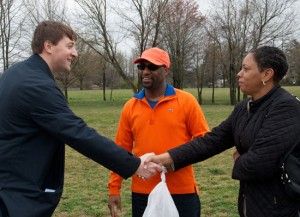 Modern life is so much more different from what it used to be just few decades ago. Seemingly everyday, new technologies are developed which allow people to access all kind of information and communicate with people from anywhere in the world. However, at the same time the Americans seem to know less and less people who live right next door to them. It is a fairly new phenomenon because our grandparents and even our parents knew most of their neighbors rather well. But not anymore—for many Americans their whole interaction with neighbors is reduced to perfunctory hand wave and an occasional small talk in passing. For some, it is a perfect arrangement because they really do not have to be friendly with people with whom they happened to live nearby by chance; others might feel that they are missing an opportunity to get to know their neighbors, be helpful to each other if necessary, and maybe get a new friend.
Modern life is so much more different from what it used to be just few decades ago. Seemingly everyday, new technologies are developed which allow people to access all kind of information and communicate with people from anywhere in the world. However, at the same time the Americans seem to know less and less people who live right next door to them. It is a fairly new phenomenon because our grandparents and even our parents knew most of their neighbors rather well. But not anymore—for many Americans their whole interaction with neighbors is reduced to perfunctory hand wave and an occasional small talk in passing. For some, it is a perfect arrangement because they really do not have to be friendly with people with whom they happened to live nearby by chance; others might feel that they are missing an opportunity to get to know their neighbors, be helpful to each other if necessary, and maybe get a new friend. Americans have always been a nation which prized their privacy and the right to protect their properties; as a result, we are often disinclined to approach a neighbor out of fear to feel unwelcomed. Also, Americans move from one place to another much more often nowadays. Thus, we often fail to establish relationships with ever-changing neighbors. In addition, modern families are often two-career families and there is nobody home most of the day and, after a long day of work, people rarely have time to associate with their neighbors. After all, there is housework to do, dinner to be prepared, children to be taken care of—the list is long. Moreover, new technologies allow us to keep up with just about anything happening in the world; as such, simple, face-to-face interaction with your neighbors is often less interesting and stimulating for many. These are just few factors, and it is a fact of our modern life that sometimes it is simply easier not to get friendly with our neighbors.
Americans have always been a nation which prized their privacy and the right to protect their properties; as a result, we are often disinclined to approach a neighbor out of fear to feel unwelcomed. Also, Americans move from one place to another much more often nowadays. Thus, we often fail to establish relationships with ever-changing neighbors. In addition, modern families are often two-career families and there is nobody home most of the day and, after a long day of work, people rarely have time to associate with their neighbors. After all, there is housework to do, dinner to be prepared, children to be taken care of—the list is long. Moreover, new technologies allow us to keep up with just about anything happening in the world; as such, simple, face-to-face interaction with your neighbors is often less interesting and stimulating for many. These are just few factors, and it is a fact of our modern life that sometimes it is simply easier not to get friendly with our neighbors.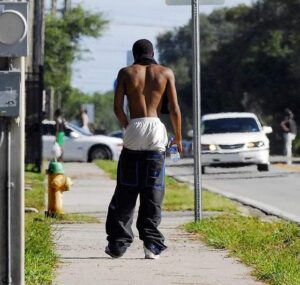 After Several Restaurant Chains Announce That They will be refusing to serve customers with saggin pants; I elected to repost this story just to keep the public aware of the true meaning behind the issue.
After Several Restaurant Chains Announce That They will be refusing to serve customers with saggin pants; I elected to repost this story just to keep the public aware of the true meaning behind the issue. I told him the origin of that look was from centuries ago. It was the intent of slave owners to demoralize the field workers by forbidding them to wear a belt as they worked in the fields or at any other rigorous job. In addition, men in prison wore their pants low when they were ‘spoken for. The other reason their pants looked like that was they were not allowed to have belts because prisoners were likely to try to commit suicide. And, saggin’ pants prevents you from running.
I told him the origin of that look was from centuries ago. It was the intent of slave owners to demoralize the field workers by forbidding them to wear a belt as they worked in the fields or at any other rigorous job. In addition, men in prison wore their pants low when they were ‘spoken for. The other reason their pants looked like that was they were not allowed to have belts because prisoners were likely to try to commit suicide. And, saggin’ pants prevents you from running. Most people, after experimenting with different types of alcohol, choose their favorite drink and stick to it. There is a wide range of alcohol to choose from: hard liquors, different cocktails, dazzling variety of wines and, of course, many types of beers. As such, many people believe that a choice of drink can tell a lot about a person’s character and life style. What are some of the most widespread beliefs associated with favorite alcoholic beverage?
Most people, after experimenting with different types of alcohol, choose their favorite drink and stick to it. There is a wide range of alcohol to choose from: hard liquors, different cocktails, dazzling variety of wines and, of course, many types of beers. As such, many people believe that a choice of drink can tell a lot about a person’s character and life style. What are some of the most widespread beliefs associated with favorite alcoholic beverage? vary greatly in price depending on region and year it was produced. French and Italian wines, with their superior grapes and rich traditions, are often the most expensive ones; Australian, South African, Chilean, and American wines are often more affordable and some can be very good. While wine drinkers can sometimes come off as pretentious and somewhat snooty, many people drink red wine because of its health advantages; scientists assert that it is good for your heart. Interestingly, according to 2011 statistics provided by International Wine and Spirit Research and Vinexpo, traditional countries with highest rates of wine consumption such as France, Italy, Spain, Austria, and Germany were pushed over by US, where experts predict that by 2015 there will be 13 liters of wine consumed per adult per year. Two more countries, which are emerging as big wine markets, are China and Hong Kong. As such, wine is becoming a drink of choice for many people across the countries.
vary greatly in price depending on region and year it was produced. French and Italian wines, with their superior grapes and rich traditions, are often the most expensive ones; Australian, South African, Chilean, and American wines are often more affordable and some can be very good. While wine drinkers can sometimes come off as pretentious and somewhat snooty, many people drink red wine because of its health advantages; scientists assert that it is good for your heart. Interestingly, according to 2011 statistics provided by International Wine and Spirit Research and Vinexpo, traditional countries with highest rates of wine consumption such as France, Italy, Spain, Austria, and Germany were pushed over by US, where experts predict that by 2015 there will be 13 liters of wine consumed per adult per year. Two more countries, which are emerging as big wine markets, are China and Hong Kong. As such, wine is becoming a drink of choice for many people across the countries. One of the best months of the year—and many people concur—is October. The heat and humidity of summer are gone; the coldness of winter is still far away. October is the month of perfect weather and breathtaking beauty. In many parts of the country, people visit countryside and parks to admire autumnal views—leaves are turning vivid red, yellow, and orange; the sky is bright blue; the air is crisp and invigorating. However, the month of October is not just about the beautiful weather; there are also interesting traditions and rich history associated with it.
One of the best months of the year—and many people concur—is October. The heat and humidity of summer are gone; the coldness of winter is still far away. October is the month of perfect weather and breathtaking beauty. In many parts of the country, people visit countryside and parks to admire autumnal views—leaves are turning vivid red, yellow, and orange; the sky is bright blue; the air is crisp and invigorating. However, the month of October is not just about the beautiful weather; there are also interesting traditions and rich history associated with it.
 You have submitted your resume and have been asked to come in for an interview. Are you prepared? The following are questions you can expect to be asked, or variations thereof. They could apply for any position you are being interviewed for. For purposes of this article we have used Firefighter”.
You have submitted your resume and have been asked to come in for an interview. Are you prepared? The following are questions you can expect to be asked, or variations thereof. They could apply for any position you are being interviewed for. For purposes of this article we have used Firefighter”.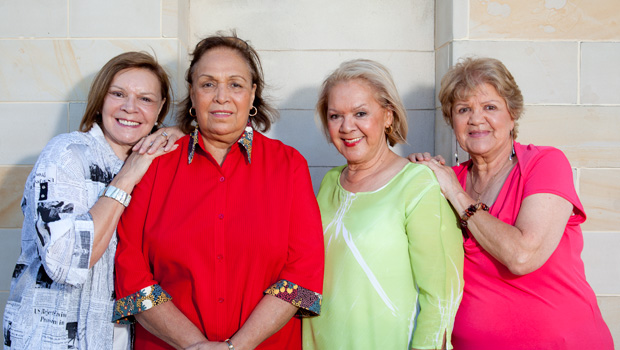
 Their life began in a difficult environment which saw Laurel having to leave her home town in search of greener pastures caused by her struggle to find regular employment in her home town, a factor that she attributed to the race problems at the time. The Sapphires didn’t begin life as professional entertainers. As youngsters, their main goal, as was many other Aboriginal girls, was to survive in a society where they were treated as outcasts. In fact, their shows, which ranged from Country and Western to comedy acts, were more for the benefit of friends and family than anyone else. Any concerts that they did do were to earn enough money to survive, rather than in a bid to find fame and fortune.
Their life began in a difficult environment which saw Laurel having to leave her home town in search of greener pastures caused by her struggle to find regular employment in her home town, a factor that she attributed to the race problems at the time. The Sapphires didn’t begin life as professional entertainers. As youngsters, their main goal, as was many other Aboriginal girls, was to survive in a society where they were treated as outcasts. In fact, their shows, which ranged from Country and Western to comedy acts, were more for the benefit of friends and family than anyone else. Any concerts that they did do were to earn enough money to survive, rather than in a bid to find fame and fortune.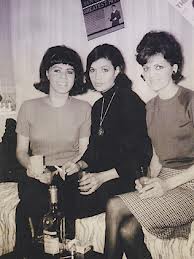 The sheer notion of an Aboriginal all girls group-finding success in 1960’s Australia would have made many laugh at the time. Seen as outcasts, many were still the victims of racism and it’s fair to say it wasn’t the most pleasant of environments for Aborigines to live in. That is what makes the story of these women all the more rousing. Whilst they no doubt saw a chance to escape a difficult life and so grabbed it with both hands. It’s unlikely that they could have foreseen the impact that they would have and the giant steps towards all aboriginal equality that they themselves would have played a part in.
The sheer notion of an Aboriginal all girls group-finding success in 1960’s Australia would have made many laugh at the time. Seen as outcasts, many were still the victims of racism and it’s fair to say it wasn’t the most pleasant of environments for Aborigines to live in. That is what makes the story of these women all the more rousing. Whilst they no doubt saw a chance to escape a difficult life and so grabbed it with both hands. It’s unlikely that they could have foreseen the impact that they would have and the giant steps towards all aboriginal equality that they themselves would have played a part in. The study of population is important for any country in order to understand how the composition of population changes over time and what implications these changes might have for the future. Usually, regularly held censuses establish such important findings as total number of people residing in the country, sex ratio of the population, median age, and sex/age distribution across the nation, regions, states, etc. In the United States, there were regularly (every ten years) held censuses since 1790 with the last one taking place in 2010. According to the U.S. Census Bureau, compared with the population data from a previously held census of 2000, several trends became apparent in 2010. First, total population of the United States grew by 9.7 percent from 281.4 million to 308.7 million people. The growth was slightly slower than during the previous decade (13.2 percent), but comparable to the one in the period of 1980-1990 (9.8 percent). Second, male population grew by 9.9 percent, while female one grew by 9.5 percent. Thus, the sex ratio was 49.1 percent male to 50.9 percent female in 2000 (or 96.3 men per 100 women), and 49.2 percent male to 50.8 percent female in 2010 (or 96.7 men per 100 women). Male population grew a little bit faster than a female one during the last decade, mostly due to narrowing mortality gap, especially at older age. Although there are usually 105 males to 100 females at birth, the number of females increases with age (because men die in larger numbers at any age). Thus, in 2010 in all four major US regions (Northeast, Midwest, West, and South) females outnumbered males with the highest sex ratio in the West (99.3 male to 100 female) and the lowest ratio in the Northeast (94.5). Third, and probably the most important, trend which became apparent was that older population of the United States grew at a much faster rate than the younger one during the last decade.
The study of population is important for any country in order to understand how the composition of population changes over time and what implications these changes might have for the future. Usually, regularly held censuses establish such important findings as total number of people residing in the country, sex ratio of the population, median age, and sex/age distribution across the nation, regions, states, etc. In the United States, there were regularly (every ten years) held censuses since 1790 with the last one taking place in 2010. According to the U.S. Census Bureau, compared with the population data from a previously held census of 2000, several trends became apparent in 2010. First, total population of the United States grew by 9.7 percent from 281.4 million to 308.7 million people. The growth was slightly slower than during the previous decade (13.2 percent), but comparable to the one in the period of 1980-1990 (9.8 percent). Second, male population grew by 9.9 percent, while female one grew by 9.5 percent. Thus, the sex ratio was 49.1 percent male to 50.9 percent female in 2000 (or 96.3 men per 100 women), and 49.2 percent male to 50.8 percent female in 2010 (or 96.7 men per 100 women). Male population grew a little bit faster than a female one during the last decade, mostly due to narrowing mortality gap, especially at older age. Although there are usually 105 males to 100 females at birth, the number of females increases with age (because men die in larger numbers at any age). Thus, in 2010 in all four major US regions (Northeast, Midwest, West, and South) females outnumbered males with the highest sex ratio in the West (99.3 male to 100 female) and the lowest ratio in the Northeast (94.5). Third, and probably the most important, trend which became apparent was that older population of the United States grew at a much faster rate than the younger one during the last decade.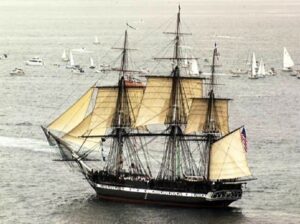 This myth of maritime warfare has been around a long time. It can be found in numerous places on the Internet and was published verbatim in Navy News some time back. The story (in italics throughout) basically reads:
This myth of maritime warfare has been around a long time. It can be found in numerous places on the Internet and was published verbatim in Navy News some time back. The story (in italics throughout) basically reads: The Gulf of Tonkin incident is the name given to two separate confrontations involving North Vietnam and the United States in the waters of the Gulf of Tonkin. On August 2, 1964, the destroyer USS Maddox, while performing a signals intelligence patrol as part of DESOTO operations, engaged three North Vietnamese Navy torpedo boats of the 135th Torpedo Squadron. A sea battle resulted, in which the Maddox expended over two hundred and eighty 3-inch and 5-inch shells, and in which four USN F-8 Crusader jet fighter bombers strafed the torpedo boats. One US aircraft was damaged, one 14.5 mm round hit the destroyer, three North Vietnamese torpedo boats were damaged, and four North Vietnamese sailors were killed and six were wounded; there were no U.S. casualties. The second Tonkin Gulf incident was originally claimed by the U.S. National Security Agency to have occurred on 4 AUG, as another sea battle, but instead may have involved “Tonkin Ghosts” (false radar images) and not actual NVN torpedo boat attacks.
The Gulf of Tonkin incident is the name given to two separate confrontations involving North Vietnam and the United States in the waters of the Gulf of Tonkin. On August 2, 1964, the destroyer USS Maddox, while performing a signals intelligence patrol as part of DESOTO operations, engaged three North Vietnamese Navy torpedo boats of the 135th Torpedo Squadron. A sea battle resulted, in which the Maddox expended over two hundred and eighty 3-inch and 5-inch shells, and in which four USN F-8 Crusader jet fighter bombers strafed the torpedo boats. One US aircraft was damaged, one 14.5 mm round hit the destroyer, three North Vietnamese torpedo boats were damaged, and four North Vietnamese sailors were killed and six were wounded; there were no U.S. casualties. The second Tonkin Gulf incident was originally claimed by the U.S. National Security Agency to have occurred on 4 AUG, as another sea battle, but instead may have involved “Tonkin Ghosts” (false radar images) and not actual NVN torpedo boat attacks. Nobody wants to be poor. However, more and more people in the United States are becoming just that – poor. According to US Census Bureau’s data from November 2012, more than 16 percent of American population (or nearly fifty million people) live in poverty. Over the last decade, the number of people who struggled to provide for basic needs such as food, housing, medical care and such was steadily growing (to compare, poverty level was 11.3 percent in 2000, 12.7 percent in 2004, 13.2 percent in 2008, and 15.1 percent in 2010). There are numerous factors which contribute to increasing level of poverty in the USA such as difficult economic climate in the country, high unemployment rates, inadequate access to proper education and job training for many people, growing cost of life, insufficient government assistance, and so on. Still, one would hope that people who are already disadvantaged in many areas of life will at least have the same rights and privileges as their better-off counterparts. Sadly, it is not always the case. One of the most important cornerstones of American democracy is the right to vote. However, in the last few years many states such as Georgia, Indiana, Alabama, Arkansas, Texas, Mississippi, Virginia and others have embraced strict voter ID requirements in order to prevent voting fraud.
Nobody wants to be poor. However, more and more people in the United States are becoming just that – poor. According to US Census Bureau’s data from November 2012, more than 16 percent of American population (or nearly fifty million people) live in poverty. Over the last decade, the number of people who struggled to provide for basic needs such as food, housing, medical care and such was steadily growing (to compare, poverty level was 11.3 percent in 2000, 12.7 percent in 2004, 13.2 percent in 2008, and 15.1 percent in 2010). There are numerous factors which contribute to increasing level of poverty in the USA such as difficult economic climate in the country, high unemployment rates, inadequate access to proper education and job training for many people, growing cost of life, insufficient government assistance, and so on. Still, one would hope that people who are already disadvantaged in many areas of life will at least have the same rights and privileges as their better-off counterparts. Sadly, it is not always the case. One of the most important cornerstones of American democracy is the right to vote. However, in the last few years many states such as Georgia, Indiana, Alabama, Arkansas, Texas, Mississippi, Virginia and others have embraced strict voter ID requirements in order to prevent voting fraud. Voter ID laws require that all voters present government-issued photo IDs at the time of voting, but many critics are concerned that the law might disenfranchise many potential voters, predominantly poor, elderly, and women. According to the study by New York University’s Brennan Center, about 11 percent (or 21 million people) of eligible American voters do not have government-issued photo IDs and do not have necessary means to get them. Moreover, the issue is even worse for elderly (about 18 percent of them do not have current photo IDs) and women (only about 66 percent of voter women have proof of citizenship which matches their current name because many women change their names when they get married). As such, voter ID laws might prevent many people, predominantly poor, from exercising their constitutional right to vote. Among other laws which negatively affect the poor is mandatory testing for drugs if a person is applying for welfare.
Voter ID laws require that all voters present government-issued photo IDs at the time of voting, but many critics are concerned that the law might disenfranchise many potential voters, predominantly poor, elderly, and women. According to the study by New York University’s Brennan Center, about 11 percent (or 21 million people) of eligible American voters do not have government-issued photo IDs and do not have necessary means to get them. Moreover, the issue is even worse for elderly (about 18 percent of them do not have current photo IDs) and women (only about 66 percent of voter women have proof of citizenship which matches their current name because many women change their names when they get married). As such, voter ID laws might prevent many people, predominantly poor, from exercising their constitutional right to vote. Among other laws which negatively affect the poor is mandatory testing for drugs if a person is applying for welfare.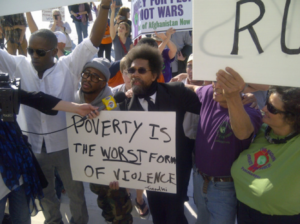 Florida has already adopted the law (if a person tests positive, he/she is denied the benefits for one year after which a person can take another test and reapply for benefits), and many other states such as Alabama, Louisiana, Kentucky, and Oklahoma are considering the enforcement of the law as well. However, mandatory drug tests violate Fourth Amendment which restricts what types of searches states can enforce. Moreover, it is evident that this law specifically targets the poor segment of American society. After all, all kinds of people receive government assistance (businessmen, farmers, etc.), but only welfare recipients are required to pass drug tests. The woes of poor do not end here because there are many other laws which target them. For example, many states have laws in place which punish homeless people. According to the data from US Department of Housing and Urban Development, there were about 643 thousand homeless people in the USA in 2009, and as many as 3.5 million people experience homelessness in any given year. However, many states have adopted laws which prohibit activities such as sleeping/camping, eating, sitting, and begging in public spaces and punish the offenders with fines and/or incarceration. Sometimes, these laws veer on the edge of ridiculous as demonstrated by the law in Houston, TX where it is illegal to “molest garbage containers,” thus prohibiting homeless people from looking for food there.
Florida has already adopted the law (if a person tests positive, he/she is denied the benefits for one year after which a person can take another test and reapply for benefits), and many other states such as Alabama, Louisiana, Kentucky, and Oklahoma are considering the enforcement of the law as well. However, mandatory drug tests violate Fourth Amendment which restricts what types of searches states can enforce. Moreover, it is evident that this law specifically targets the poor segment of American society. After all, all kinds of people receive government assistance (businessmen, farmers, etc.), but only welfare recipients are required to pass drug tests. The woes of poor do not end here because there are many other laws which target them. For example, many states have laws in place which punish homeless people. According to the data from US Department of Housing and Urban Development, there were about 643 thousand homeless people in the USA in 2009, and as many as 3.5 million people experience homelessness in any given year. However, many states have adopted laws which prohibit activities such as sleeping/camping, eating, sitting, and begging in public spaces and punish the offenders with fines and/or incarceration. Sometimes, these laws veer on the edge of ridiculous as demonstrated by the law in Houston, TX where it is illegal to “molest garbage containers,” thus prohibiting homeless people from looking for food there. IN THE TINY town of Enterprise, Alabama, there is a statue dedicated to an insect—the boll weevil.
IN THE TINY town of Enterprise, Alabama, there is a statue dedicated to an insect—the boll weevil. These are the times when we are urged to see the big picture, that God IS in everything and everyone, and that something bigger is trying to birth through the challenge/opportunity. Claim the challenge/opportunity as your sign and your herald of PROSPERITY! Then move forward with confidence, knowing that everything is unfolding in Divine Right Order for you’re NEW and BIGGER LIFE. Science of Mindweevil and what it has done as the herald of prosperity. A synonym for herald is assign, a messenger. The leaders recognized that the blight of the boll weevil was simply a messenger that prosperity was on its way.
These are the times when we are urged to see the big picture, that God IS in everything and everyone, and that something bigger is trying to birth through the challenge/opportunity. Claim the challenge/opportunity as your sign and your herald of PROSPERITY! Then move forward with confidence, knowing that everything is unfolding in Divine Right Order for you’re NEW and BIGGER LIFE. Science of Mindweevil and what it has done as the herald of prosperity. A synonym for herald is assign, a messenger. The leaders recognized that the blight of the boll weevil was simply a messenger that prosperity was on its way.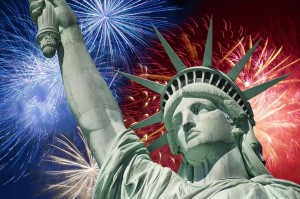 Almost everybody knows a person who has their birthday on some major holiday such as Christmas, Independence Day, New Year’s Eve, or similar. What is it like to have your birthday coincide with one of the universally celebrated events? Do people feel twice as lucky to have everybody around them not only celebrate their birthdays but also a major holiday or do they feel somewhat shorthanded by nature?
Almost everybody knows a person who has their birthday on some major holiday such as Christmas, Independence Day, New Year’s Eve, or similar. What is it like to have your birthday coincide with one of the universally celebrated events? Do people feel twice as lucky to have everybody around them not only celebrate their birthdays but also a major holiday or do they feel somewhat shorthanded by nature?